Icy Rhea: Photos of Saturn's Second-Largest Moon
Icy Rhea
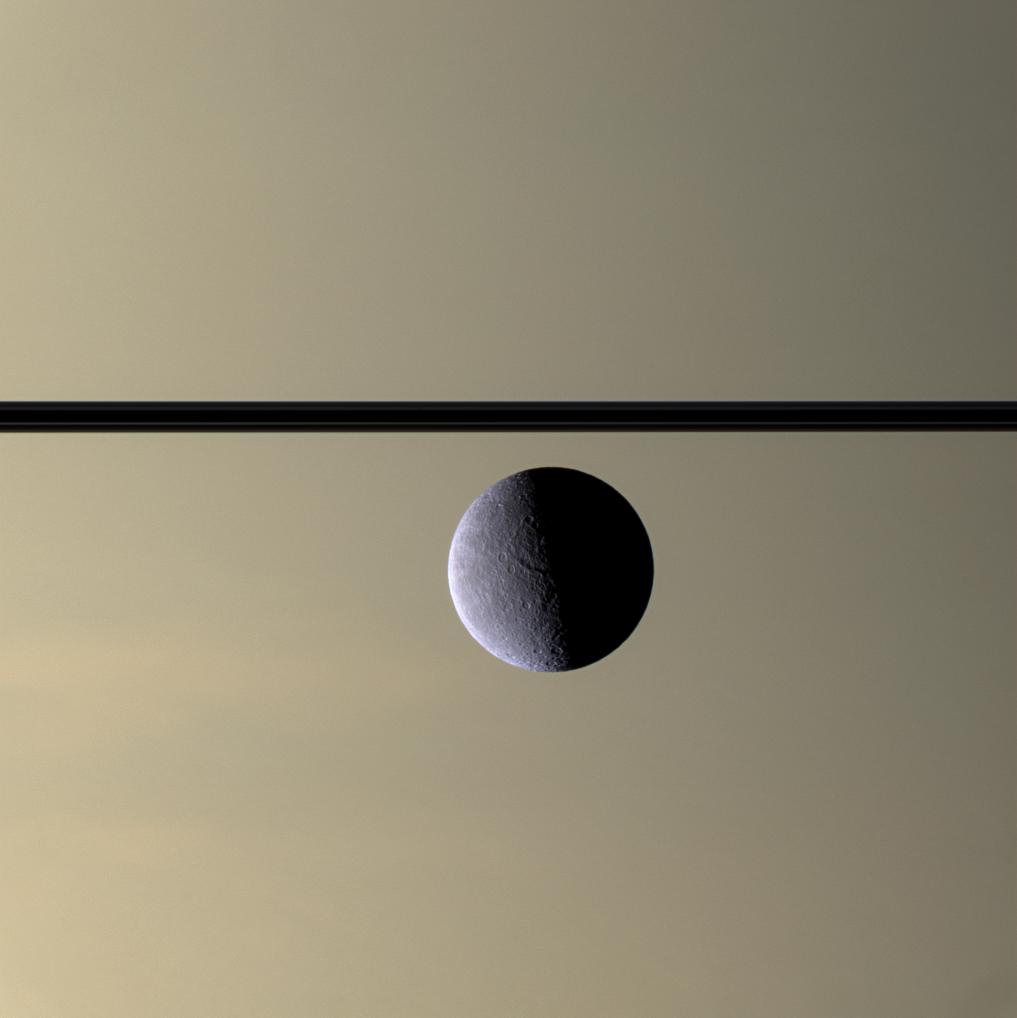
The Cassini spacecraft looks toward the Rhea's cratered, icy landscape with the dark line of Saturn's ringplane and the planet's murky atmosphere as a background. Rhea is Saturn's second-largest moon, at 1,528 kilometers (949 miles) across. This image was taken on Oct. 20, 2008.
Assembly of Sky Forms
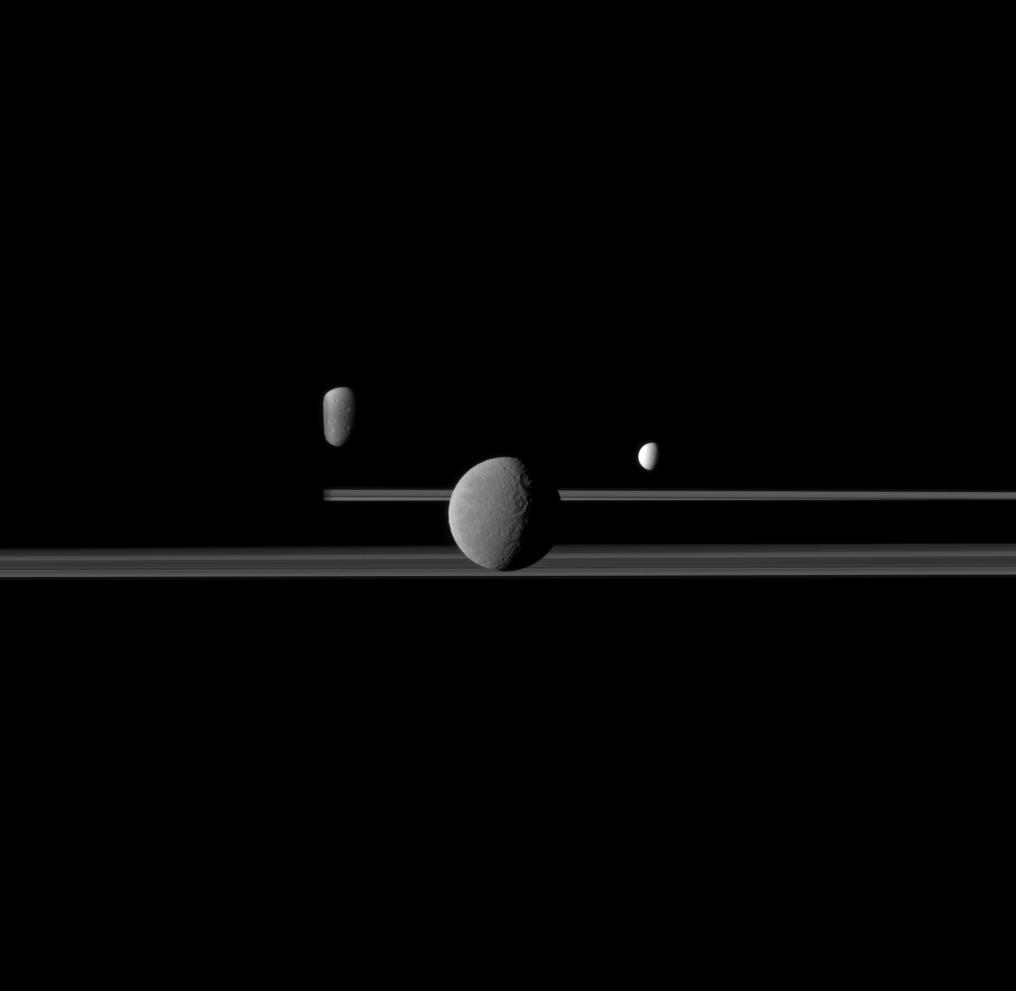
Wednesday, June 22, 2011: Three of Saturn's moons appear in a somber group portrait along with the northern, sunlit ringplane. Rhea (949 miles or 1,528 kilometers across) is closest to Cassini spacecraft, which took the photograph, and appears largest at the center of the image. Enceladus (313 miles or 504 kilometers across) is to the right of Rhea. Dione (698 miles or 1,123 kilometers across) is to the left of Rhea, partly obscured by Saturn. Saturn is present on the left of this image but its night side is too dark to see.
—Tom Chao
Closeup of Saturn Moon Rhea's Battered Surface
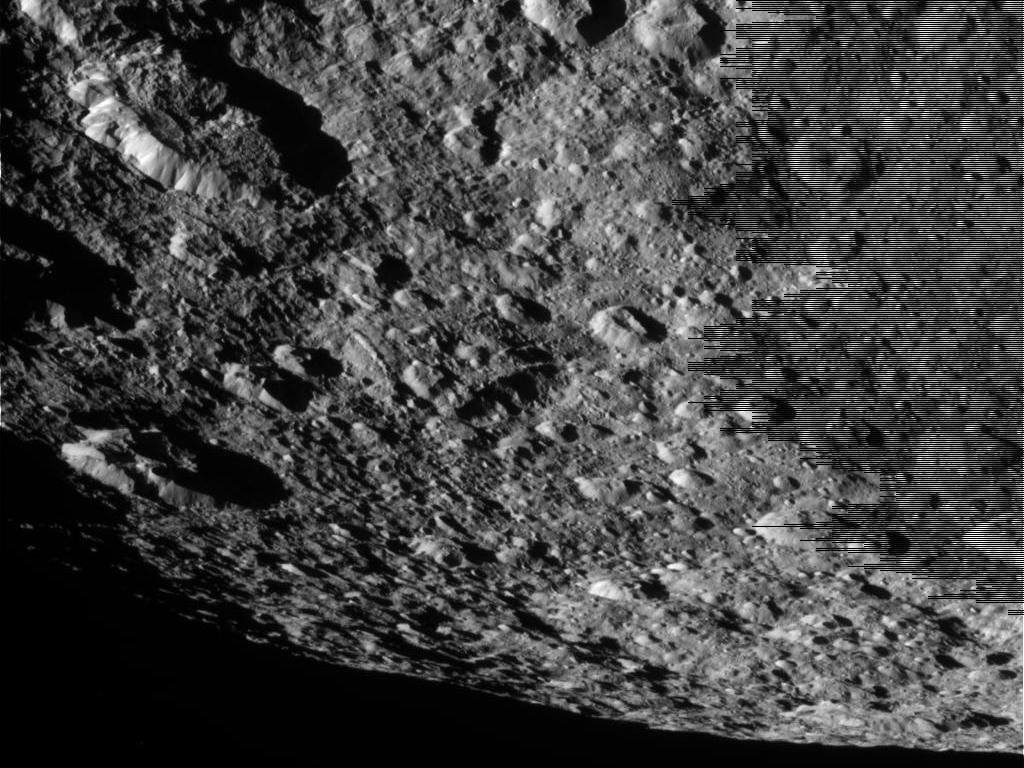
A closeup view of the cratered surface of Saturn's moon Rhea, captured by NASA's Cassini spacecraft on March 10, 2012. The camera was pointing toward Rhea at 26,257 miles (42,258 kilometers) away.
Saturn and Three Moons
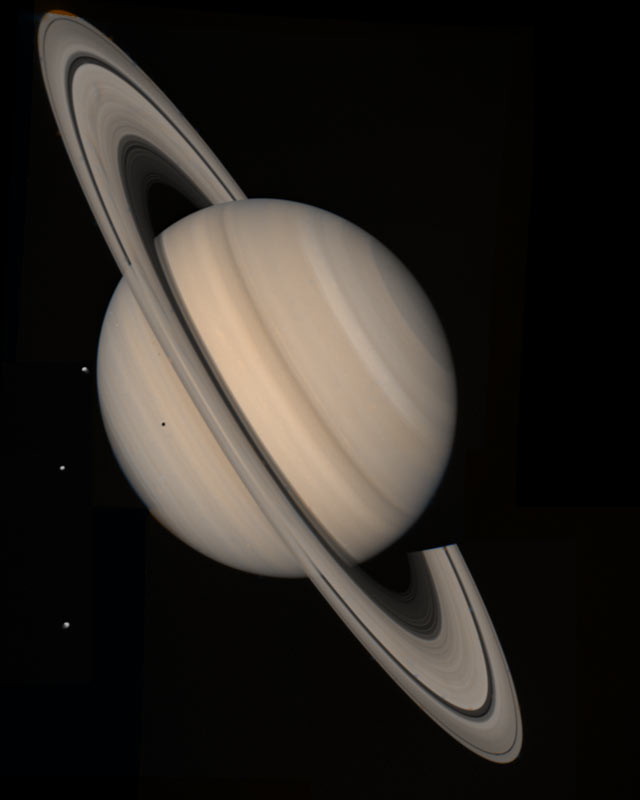
Saturn and three moons, Tethys, Dione and Rhea, seen by a Voyager spacecraft on August 4, 1982, from a distance of 13 million miles.
Saturn's Moon Might Have Rings, Too
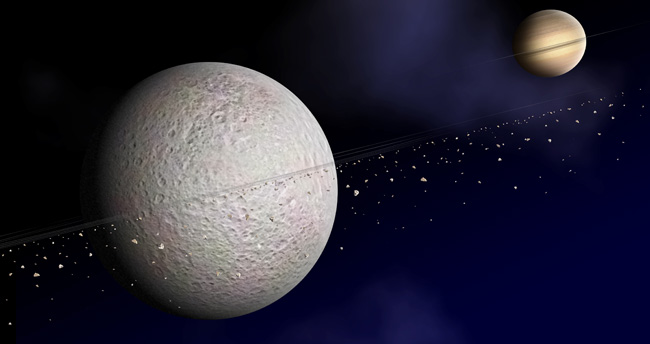
An artist's concept of the ring of debris that may orbit Saturn's second-largest
Icy Moon Rhea's Surface
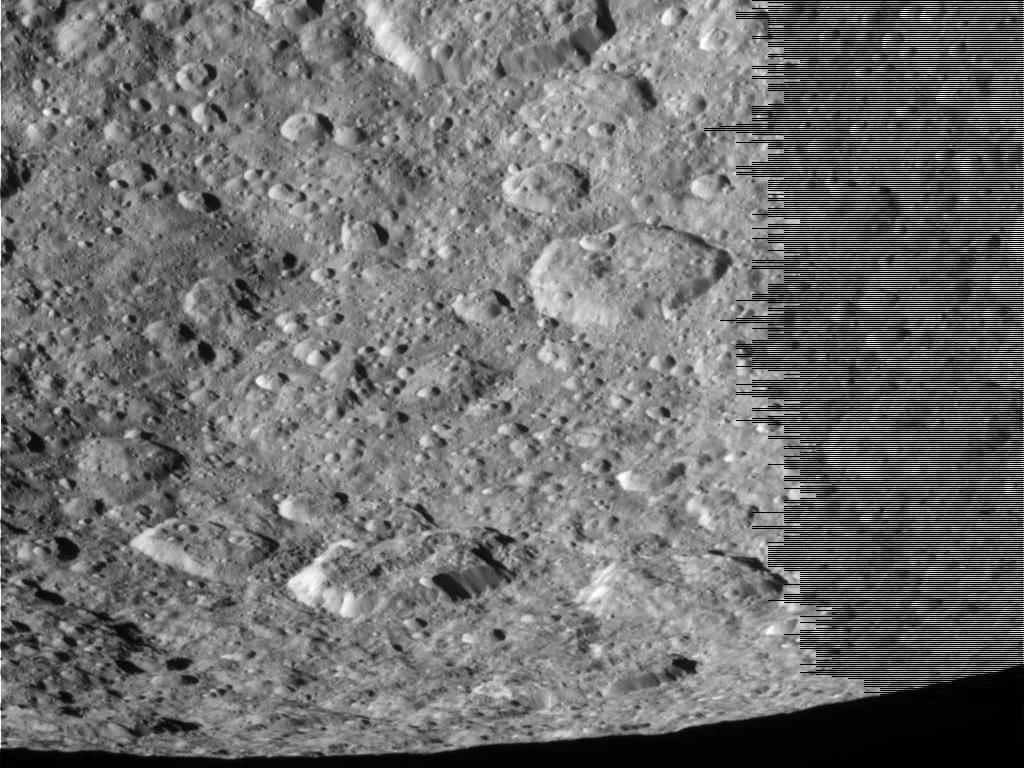
A shot of the cratered surface of Saturn's icy moon Rhea, snapped by NASA's Cassini spacecraft on March 10, 2012. The camera was pointing toward Rhea at 26,257 miles (42,258 kilometers) away.
Saturn Moon Rhea in Shadow
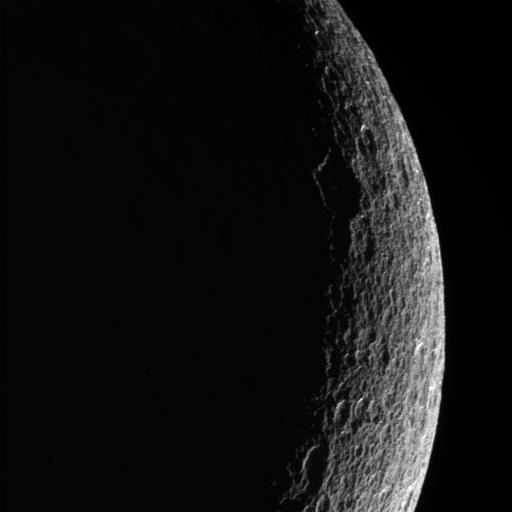
NASA's Cassini spacecraft took this raw, unprocessed image of Saturn's moon Rhea on March 10, 2012. The camera was pointing toward Rhea at approximately 71,495 miles (115,060 kilometers) away.
Get the Space.com Newsletter
Breaking space news, the latest updates on rocket launches, skywatching events and more!
Mysterious Patches of Color Mapped on Saturn's Moons
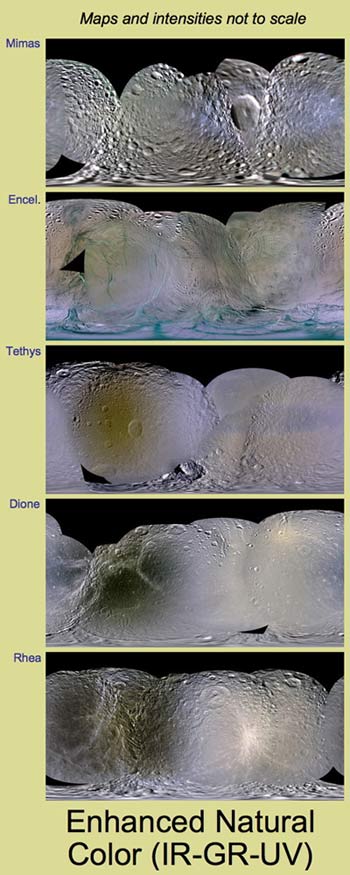
Maps of the colored patterns seen on Mimas, Enceladus, Tethys, Dione and Rhea by instruments on board NASA's Cassini spacecraft. The leading hemisphere is on the right half of each image and the trailing hemisphere is on the left half.
Saturn's Moons Engage in Cosmic Paintball Fight

These three views of Saturn's moon Rhea were made from data obtained by NASA’s Cassini spacecraft, enhanced to show colorful splotches and bands on the icy moon’s surface.
Titan and Rhea Together
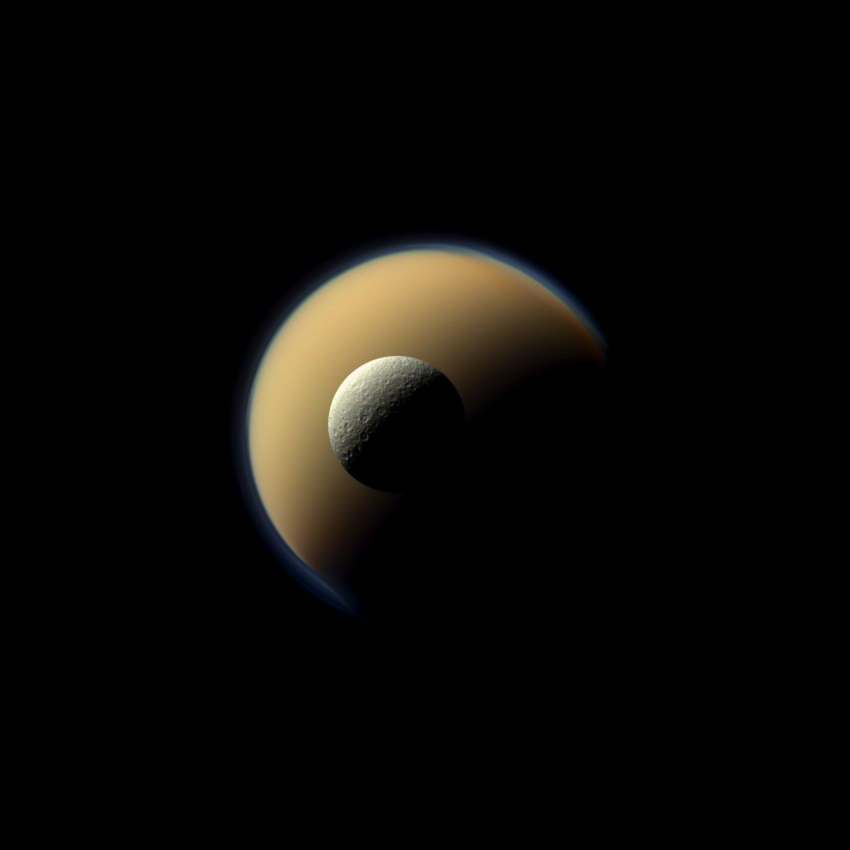
Saturn's largest and second largest moons, Titan and Rhea, appear to be stacked on top of each other in this true-color scene from NASA's Cassini spacecraft released on Dec. 23, 2013. The north polar hood can be seen on Titan appearing as a detached layer at the top of the moon on the top right. This view looks toward the Saturn-facing side of the smaller Rhea.
Join our Space Forums to keep talking space on the latest missions, night sky and more! And if you have a news tip, correction or comment, let us know at: community@space.com.

Space.com is the premier source of space exploration, innovation and astronomy news, chronicling (and celebrating) humanity's ongoing expansion across the final frontier. Originally founded in 1999, Space.com is, and always has been, the passion of writers and editors who are space fans and also trained journalists. Our current news team consists of Editor-in-Chief Tariq Malik; Editor Hanneke Weitering, Senior Space Writer Mike Wall; Senior Writer Meghan Bartels; Senior Writer Chelsea Gohd, Senior Writer Tereza Pultarova and Staff Writer Alexander Cox, focusing on e-commerce. Senior Producer Steve Spaleta oversees our space videos, with Diana Whitcroft as our Social Media Editor.









